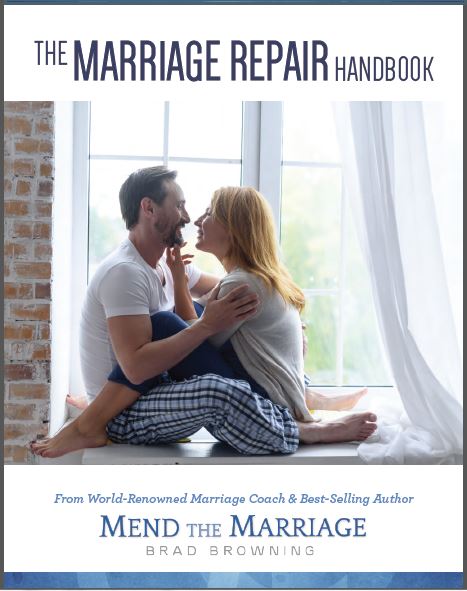Is gay marriage legal in the US? The question of same-sex marriage legality in the United States has been a subject of intense legal and social debate for decades. This comprehensive guide explores the historical context, landmark legal decisions, and the current state of affairs, including ongoing challenges. While the landmark Supreme Court case Obergefell v. Hodges (2015) established nationwide legality, the journey was complex. Additionally, it involved significant legal battles and shifts in public opinion.
When Was Gay Marriage First Legalized in the US? A Timeline of Key Events
The fight for marriage equality began long before 2015. Early activism and legal challenges laid the groundwork:
Early Activism (1970s-1990s)
The early years of the LGBTQ+ rights movement saw nascent organizations like the Mattachine Society and the Daughters of Bilitis. They began to address marriage equality, albeit cautiously, given the pervasive social stigma and legal obstacles. These groups often operated underground, focusing on building community, challenging discriminatory laws where possible. They slowly shifted public perceptions through education and advocacy. Early court cases, while unsuccessful, served as crucial learning experiences, establishing legal arguments and paving the way for future challenges. The struggle was marked by both incremental victories and significant setbacks, but the groundwork was slowly but surely being laid. The Stonewall Riots of 1969, a pivotal moment in LGBTQ+ history, significantly impacted the trajectory of activism. This lead to greater visibility and bolder demands for equality.
The Defense of Marriage Act (DOMA) (1996)
This federal law, signed into law by President Clinton, defined marriage as solely between one man and one woman, significantly impacting federal benefits and recognition for same-sex couples. DOMA wasn’t merely a symbolic gesture. It had tangible consequences, denying same-sex couples access to a wide range of federal benefits enjoyed by heterosexual couples. For example, this includes Social Security benefits, tax benefits, and immigration rights. The act became a focal point for legal challenges and fueled further activism.
State-Level Legalizations (Early 2000s)
Massachusetts became the first state to legalize same-sex marriage in 2004. This was a landmark state Supreme Judicial Court ruling in Goodridge v. Department of Public Health. This decision marked a critical turning point, galvanizing both support and opposition across the nation. Other states soon followed suit, either through legislative action or judicial decisions. This created a complex and uneven legal landscape where the legality of same-sex marriage varied widely depending on geographic location.
Challenges to DOMA
Almost immediately following DOMA’s passage, legal challenges began. LGBTQ+ rights organizations and affected individuals argued that the law violated the Constitution’s guarantee of equal protection under the law. These challenges, while met with mixed success, built momentum, refining legal arguments and preparing for future Supreme Court cases.
United States v. Windsor (2013)
In this pivotal Supreme Court case, the Court struck down Section 3 of DOMA. This had denied federal recognition to same-sex marriages legally performed in states where they were permitted. This victory was significant, restoring federal benefits and recognition to same-sex couples in states that had already legalized same-sex marriage. The decision highlighted the unconstitutionality of the federal government’s discriminatory treatment of same-sex couples. It further bolstered the momentum towards nationwide marriage equality.
Obergefell v. Hodges (2015)
This landmark Supreme Court ruling established the fundamental right to marry for same-sex couples nationwide. It was based on the Fourteenth Amendment’s Due Process and Equal Protection Clauses. The 5-4 decision marked a significant victory for the LGBTQ+ rights movement. It resolved the patchwork of state laws and cementing marriage equality as a fundamental constitutional right.
Is Gay Marriage Legalized in All States? A Look at the National Landscape
Following Obergefell v. Hodges, same-sex marriage is legal in all 50 states. However, the journey wasn’t uniform. Before the Supreme Court decision, states varied significantly in their legal and social acceptance of same-sex marriage. It resulted in a period of legal uncertainty and inequality for same-sex couples living in different states. Some states actively worked to prevent the legalization of same-sex marriage, often through state constitutional amendments or legislative actions. While others embraced it much more quickly. The differing levels of acceptance and the legal battles fought in various states highlight the diverse political, social, and cultural landscapes within the country.
Where Is Gay Marriage Legal in the US? A State-by-State Breakdown
While nationwide legality is established, understanding the historical variations in state laws offers crucial context. Some states legalized same-sex marriage well before the Supreme Court ruling, reflecting more progressive legal and social environments. Others actively resisted legalization, utilizing legislative and ballot initiatives to prevent it. Analyzing the unique path of each state reveals the intricate interplay of political, social, and legal forces that shaped the nationwide outcome. (A detailed state-by-state breakdown would require extensive additional research and space.)
What States Allow Gay Marriage? Understanding the Legal Progression
The progression of state-level legalization wasn’t uniform. Political and social factors significantly influenced each state’s decision. Public opinion polls played a role, as did the effectiveness of local lobbying efforts by LGBTQ+ rights organizations and the success of legal challenges to state-level bans. Some states saw rapid legislative action to legalize same-sex marriage, others moved slower due to strong political opposition, and a few fiercely resisted it until the Supreme Court’s decision. Analyzing this uneven progression reveals nuanced insights into the diverse forces that shaped the ultimate national outcome.
In What States Are Gay Marriage Legal? A Comprehensive Overview
All 50 states currently allow same-sex marriage, thanks to the Obergefell v. Hodges decision. However, the variations in the timing and manner of legalization highlight the complex history of the issue and the diverse landscape of legal and social acceptance across the United States.
Where Is Gay Marriage Not Legal in the US? Examining Remaining Legal Challenges
Currently, there are no states where same-sex marriage is illegal. However, significant legal challenges remain concerning religious exemptions and related issues that challenge the scope and application of the Obergefell ruling.
Is Gay Marriage Federally Legal in the US? The Role of the Supreme Court
The Supreme Court’s Obergefell v. Hodges ruling established the federal legality of same-sex marriage, resolving the legal uncertainty and inconsistencies that existed previously. This decision had profound implications for access to federal benefits, recognition across state lines, and the overall legal standing of same-sex couples in the United States.
What States Is Gay Marriage Not Legal In? Addressing Remaining Legal Barriers
There are no states where same-sex marriage is illegal. Understanding past legal barriers, however, is essential to appreciating the significance of the Obergefell decision and the ongoing efforts to ensure the full realization of marriage equality for same-sex couples. Past barriers included state constitutional amendments explicitly prohibiting same-sex marriage and legislative efforts to restrict or limit marriage rights for same-sex couples.
The Road to Nationwide Marriage Equality: A Historical Overview
The journey to nationwide marriage equality was a complex interplay of sustained activism, protracted legal battles, and gradual shifts in public opinion spanning decades. It wasn’t a linear progression but rather a series of incremental victories and setbacks. This journey underscores the commitment of activists, lawyers, and community organizers who dedicated years to challenging discriminatory laws and fighting for the recognition of same-sex relationships. This section would benefit from detailing specific examples of legal strategies, activism, and landmark cases that contributed to the eventual success.
From State-Level Bans to Federal Recognition: The Evolution of Gay Marriage Law
This section should provide a detailed chronological account of the legal evolution of same-sex marriage laws in the United States. This would include a comprehensive discussion of key state-level cases that challenged marriage bans, highlighting the arguments used by both sides. It should also trace the shifting legal interpretations of the Fourteenth Amendment, showing how arguments based on equal protection and due process were refined and ultimately culminated in the Obergefell decision. This deeper dive would offer a more complete understanding of the legal precedents that shaped the ultimate victory.
Is Gay Marriage Legal in Canada? A Comparative Look at North American Legislation
Comparing the legal status of same-sex marriage in Canada and the United States offers valuable comparative insights. Canada legalized same-sex marriage nationally in 2005, providing a useful point of comparison with the US experience. This comparison should highlight similarities and differences in the timelines of legalization, the legal strategies employed, the roles of judicial versus legislative actions, and the overall societal reception of the change. Examining the different political and social contexts in which these legal changes occurred would enrich the analysis and provide a broader perspective on the broader social acceptance of LGBTQ+ rights in North America.
Are there any new challenges to gay marriage?
While Obergefell v. Hodges established the right to same-sex marriage nationwide, several challenges remain:
Religious Exemptions: This is a significant area of ongoing conflict. Religious organizations and individuals continue to argue for exemptions from laws requiring participation in or recognition of same-sex marriages, citing religious freedom protections. These cases often involve businesses refusing to provide services to same-sex couples, leading to complex legal battles that carefully balance religious freedom claims with the guarantee of equal protection under the law. Further investigation into specific court cases and legal arguments would provide a clearer picture of the nuanced legal issues involved.
State-Level Legislative Attempts: Despite the Obergefell ruling, future attempts to restrict or undermine same-sex marriage rights at the state level are possible, though they are likely to face significant legal hurdles. These efforts might take the form of subtle legislation indirectly limiting access to benefits or services for same-sex couples, testing the boundaries of the Supreme Court’s decision.
Erosion of Judicial Precedent: A shift in the Supreme Court’s ideological composition could theoretically lead to a reconsideration or even overturning of Obergefell, although this is generally viewed as unlikely by legal scholars. The possibility, however, underscores the inherent fragility of legal precedents and the need for continued vigilance in protecting established rights.
Changing Political Climate: Shifts in public opinion or the rise of conservative political movements could lead to renewed efforts to restrict marriage rights. Monitoring the political landscape and understanding the evolving arguments used by opponents of marriage equality is essential for effectively defending established rights. This involves analyzing the rhetorical strategies, political alliances, and legal tactics employed by those seeking to limit or reverse the progress made towards marriage equality.









